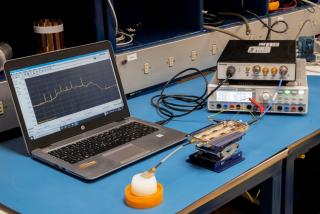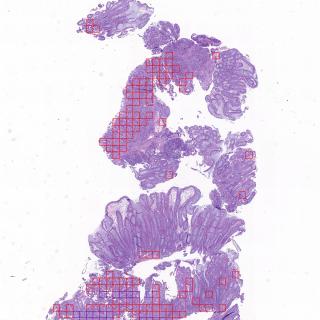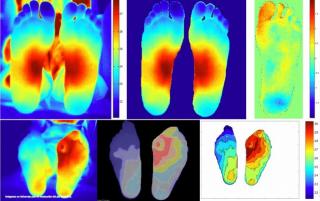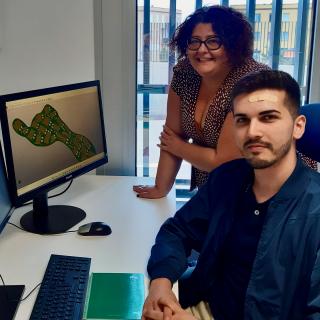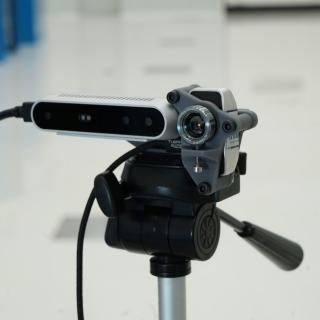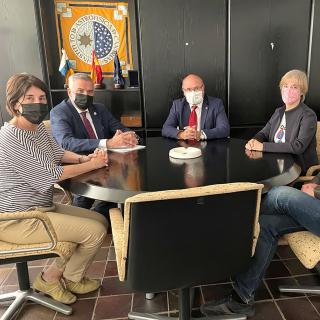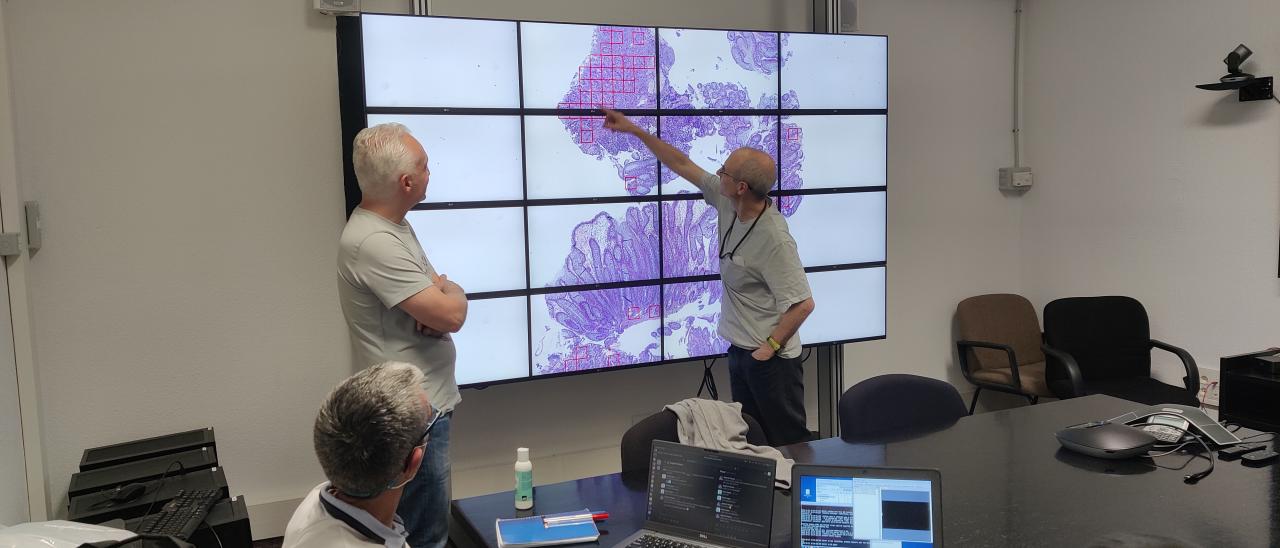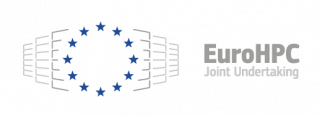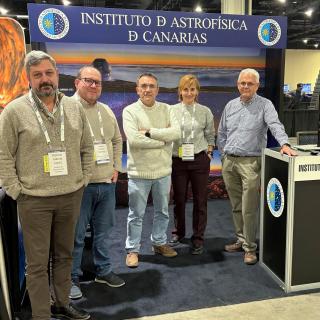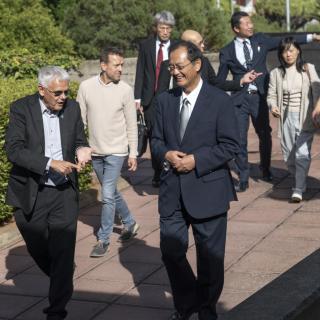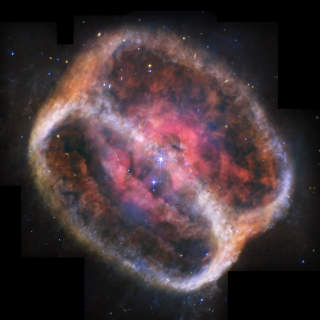The Anatomical Pathology service of the Complejo Hospitalario Universitario de Canarias (HUC) and the Instituto de Astrofísica de Canarias (IAC) are partners in the development of a computer application adapting artificial intelligence tools used in astronomy to digitised images of human tissue. The project, called “Patolog-IA”, aims to speed up the interpretation of test results and the diagnosis of colorectal cancer. It is expected that it will also be useful for personalised medicine oriented to other kinds of cancer.
Colorectal cancer is one of the most aggressive types of cancer and the most frequently diagnosed in Spain in 2021. Early detection is critical, and so samples are routinely taken, but their interpretation is slow and complex. The analyses are manually evaluated by expert pathologists with over ten years of experience, which involves significant time and limits the rate of the diagnoses.
The problem is particularly acute in ultraperiferic regions, where the technical means exist, but not so the human ones. The lack of pathologists to study the large number of samples produced, and the need to prioritise the most relevant ones, motivated the Anatomical Pathology service of the HUC to contact the IAC, where there is a group specialized in the application of artificial intelligence to astronomical images.
An initial problem is the huge size of the digitised images of human samples, with hundreds of millions of pixels, equivalent to more than a dozen high-definition televisions. The typical images from astronomical surveys tend to be smaller, although very numerous. An issue common to astrophysics and pathology is the scarcity of classified images, since it involves massive manual work by experts. Based on the results of previous investigations, the researchers identified a technique that solves both problems.
Machine learning
Thanks to the availability of the methods, codes, and even training data, from works previously published, the team has been able to apply an artificial intelligence model known as the “Mean Teacher”. In this technique two identical and very deep neural networks are combined. One of the networks performs as a “student”, and with few labeled images learns the features to detect tumors. The other network acts as a “teacher”, receives part of the information from the student, and attempts to classify unlabeled images.
In the first attempt the result is random, but iteratively, cycle after cycle, the predictions improve. Since the original images are very large, they are divided in thousands of smaller segments that match the memory size of the graphics cards used in the analysis. “In the end we get a network capable of identifying whether an image corresponds to a tumor with high reliability and very few false positives”, says Carlos Westendorp, an astrophysicists at the IAC.
A computing server equipped with a graphics card donated by NVIDIA to the IAC has been setup for exclusive use by the HUC. The service is still at the testing stage, but it will soon be possible to upload to the server the images obtained daily at the hospital, getting in return a prioritised list to be checked by the doctors. “The final diagnosis will be made by a specialised pathologist, but the most urgent cases will be identified sooner thanks to artificial intelligence”, underlines Carlos Luque, researcher of the EuroCC project that arranged the development.
The current design was made in a very short period of just a few months thanks to the fact that the tissues have common characteristics for the whole human species. “In the future we want the network to pay more attention to specific details identified by the HUC”, says the IAC researcher Andrés Asensio.”Since this technique can also be applied to other data, such as astronomical observations, we believe it is a great example of the benefits of knowledge transfer across diverse fields connected by artificial intelligence methods”, he adds.
Carlos Allende, the coordinator of the project at the IAC, remarks that “this program will continue with funds from the Instituto de Salud Carlos III for personalised precision medicine oriented to breast cancer, as well as within IACTEC, the space at the IAC devoted to technology transfer, with the name Patolog-IA.
Contactos:
Carlos Luque (IAC 922 605 200), carlos.luque [at] iac.es (carlos[dot]luque[at]iac[dot]es)
Carlos Westendorp (IAC), carlos.westendorp [at] iac.es (carlos[dot]westendorp[at]iac[dot]es)
Andrés Asensio (IAC), andres.asensio [at] iac.es (andres[dot]asensio[at]iac[dot]es)
Carlos Allende (IAC), carlos.allende.prieto [at] iac.es (carlos[dot]allende[dot]prieto[at]iac[dot]es)
Eduardo Salido (HUC 922 678 000), edsalido [at] gmail.com (edsalido[at]gmail[dot]com)

